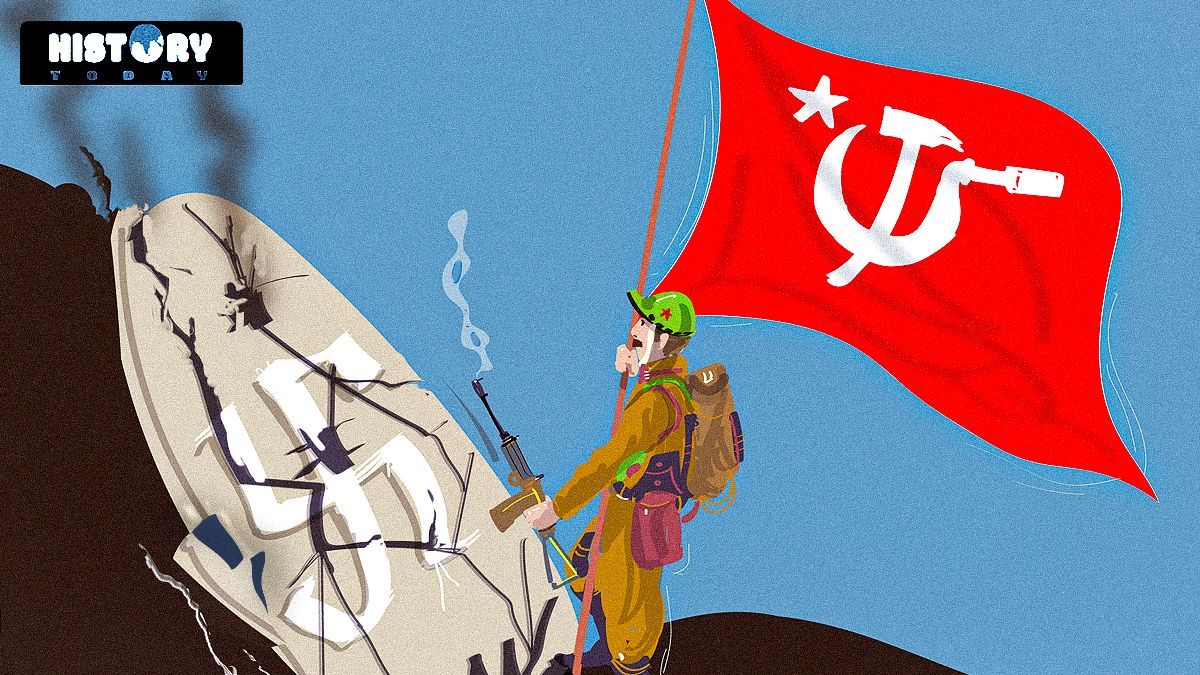Throughout history, February 2 has borne witness to some massive moments.
The state funeral of Queen Victoria of Great Britain was held on this day in 1901.
A little over a decade later, the plush Grand Central Terminal opened in New York City in 1913.
In 1943 the Battle of Stalingrad ended, marking the end to one of the most important battles in World War II.
In 1990, the ban on the African National Congress was lifted.
As part of Firstpost’s ongoing series, ‘History Today’ , we delve into defining moments of this day and their impact on the world.
The Battle of Stalingrad in World War II ends
On February 2, 1943, the Battle of Stalingrad in World War II ended.
Perhaps no battle was more crucial – or bloodier – than the siege of Stalingrad in World War II. The battle pitted the Red Army of the Soviet Union against the rampaging Nazis.
Just a few years ago, in 1938, Adolf Hitler and Joseph Stalin had signed the Nazi-Soviet Pact of non-aggression. But Hitler, whose ravenous appetite knew no bounds, was not to be trusted.
In June 1941, the Nazi Germany invaded the USSR.
In 1942, Hitler ordered the Sixth Army to take Stalingrad – the city bearing the Soviet leader’s name. The fighting was among the bloodiest of World War II with the two armies vying for supremacy in a city that had been completely decimated.
Though the Germans made advances into the city, they lost thousands of troops every week. Stalin, meanwhile, ordered a grand counter-offensive.
Soviet reinforcements under General Vasily Zhukov rushed to Stalingrad and completely encircled the massive German Army.
Impact Shorts
More ShortsTo make things even worse, Russian winter had set in.
Though Hitler personally ordered the Germans not to surrender, Field Marshall Friedrich von Paulus knew there was little hope.
On February 2, 1943, Germans in Stalingrad surrendered to the Red Army – delivering a crushing blow to the myth of German supremacy and Hitler’s ambitions.
Ban on African National Congress lifted
On February 2, 1990, then-South African president FW de Klerk lifted the ban on the African National Congress.
The ANC had been banned by the White South African government in 1960.
In 1961, the ANC established a military wing under its chief Nelson Mandela.
The aim was to carry out acts of sabotage against the government under undermine apartheid.
Mandela and a slew of other leaders were given life sentences by the government in 1964.
De Klerk’s decision resulted in Mandela being released from prison.
For apartheid, it was the beginning of the end.
By 1994, Mandela, the ANC president, was sworn in as the President of South Africa.
Grand Central Terminal in New York opens
On February 2, 1913, Grand Central Terminal in New York opened its doors.
As per Britannica, it had taken Reed & Stem and Warren & Wetmore 10 years to design and build it.
Warren & Wetmore came up with the grand aesthetics.
At the time, it was one of the world’s largest enclosed spaces.
Though the station was not fully completed, the public was left astonished.
Over 150,000 visited Grand Central Terminal that first day.
The station, with its huge clock and sculptures of an American eagle and Roman gods, was magnificently restored in years later.
It is popularly known as Grand Central Station.
Queen Victoria’s funeral
On February 2, 1901, Queen Victoria’s funeral took place in St. George’s Chapel
Victoria had ruled from 1837 to 1901.
That period, known as the Victorian era, witnessed nine prime minister come and go from office.
Until Queen Elizabeth, no one had sat on the British throne for longer – or was more synonymous with Empire.
Victoria passed away at age 81 on January 22, 1901.
Her glittering funeral saw royalty from all over Europe attend.
In keeping with her wishes, she was given a funeral ‘befitting a soldier’s daughter’ and the head of the army.
Those at the funeral wore white instead of black.
Victoria was succeeded by her son Edward VII – and thus began the Edwardian era.
This day, that year
1653: New Amsterdam is incorporated as a city
1897: Alfred Cralle, a black inventor, patents the ice cream scoop
1905: Writer Ayn Rand, a favourite of college students everywhere, is born
1922: James Joyce publishes Ulysses – perhaps the most influential literary work in modern history
1971: Idi Amin declares himself president of Rwanda
2014: Actor Philip Seymour Hoffman tragically dies of a heroin overdose
)